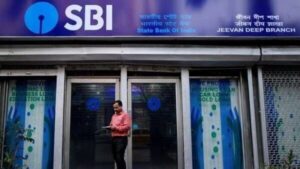New Delhi: In a move underscoring confidence in India’s credit environment, the State Bank of India (SBI), the country’s largest public-sector lender, has announced a loan growth target of 12–13% for FY2025–26. The announcement comes at a time when the global economic landscape is witnessing significant tariff volatility, trade policy reevaluations, and regulatory recalibrations from central banks, all of which present substantial challenges to sustained credit growth. SBI’s forward-looking strategy aims to maintain momentum by focusing on high-yield segments such as retail, agriculture, and MSME (Micro, Small and Medium Enterprises), while cautiously managing its exposure to large corporate loans.
Also Read: Kotak Mahindra Bank Q4 Results: Profit Falls Sharply Amid Surge in Provisions
Retail and MSME Segments to Drive Growth
According to SBI executives, the 12–13% credit growth target will be largely driven by an aggressive push in the retail and MSME sectors, both of which have shown strong post-pandemic recovery and increasing credit appetite. Personal loans, home loans, vehicle financing, and credit cards remain top-performing retail products, with digital loan disbursement channels showing record uptakes.
The bank sees the MSME sector as a key lever for inclusive growth, especially after the central government’s PLI (Production Linked Incentive) schemes and digitalization efforts. In FY25, SBI had already expanded MSME credit by over ₹1.5 lakh crore, and it expects that momentum to continue well into FY26.
Tariff Uncertainty and Global Volatility
Despite this optimistic projection, SBI acknowledges the uncertainty surrounding global tariff structures and trade agreements, especially in the wake of rising protectionism, US-China tensions, and ongoing geopolitical disruptions. Bank officials stated that tariff fluctuations could influence input costs for manufacturers, thereby indirectly impacting borrowing demand.
Nevertheless, SBI is building resilience through diversified lending, a conservative provisioning strategy, and stress testing for key sectors sensitive to global pricing shifts, such as textiles, electronics, and automotive components.

Corporate Loan Outlook and Risk Management
While retail and MSMEs are on an upswing, SBI remains cautious on corporate lending. The bank is expected to focus on top-rated borrowers with sound balance sheets and sustainable cash flows. Large project-based lending will likely be selective and closely aligned with government infrastructure plans, renewable energy transitions, and public-private partnership models.
To mitigate risk, SBI is also enhancing its due diligence and risk modelling systems, including adopting AI-powered credit analytics for early warning signals. The Gross NPA ratio currently stands at around 2.4%, a significant drop from the double-digit figures of five years ago, indicating improved credit quality and risk practices.
Digital Banking to Support Expansion
One of the core drivers of this loan growth will be the bank’s increased reliance on its digital platforms—YONO and SBI Quick—which have streamlined loan approvals, reduced processing time, and enhanced customer experience. SBI’s digital transactions now account for over 68% of its total retail banking operations, signaling a paradigm shift in how the bank engages with its customers.
The lender is also piloting AI chatbots for loan pre-qualification and automating backend compliance processes to further scale its credit expansion while keeping operational costs in check.
Macroeconomic Environment and RBI Influence
SBI’s growth trajectory is being framed within the macroeconomic narrative set by the Reserve Bank of India (RBI), which is expected to hold rates steady in the upcoming monetary policy, keeping repo at 6.5%. This pause in rate hikes supports credit demand from both consumers and businesses. However, inflationary pressure due to tariffs and global supply chain distortions could influence rate decisions in the second half of the fiscal year.
Conclusion
Despite facing global uncertainties including tariff volatility, inflationary risks, and interest rate unpredictability, SBI’s goal of achieving a 12–13% loan growth rate in FY26 reflects strong confidence in India’s domestic economic momentum. With a well-calibrated focus on retail and MSME lending, coupled with robust risk management and digital enablement, the bank appears poised to strengthen its market dominance while contributing significantly to national economic growth.
For more information and updates on the State Bank of India’s financial performance and loan growth strategy, you can visit SBI’s official investor relations page.

